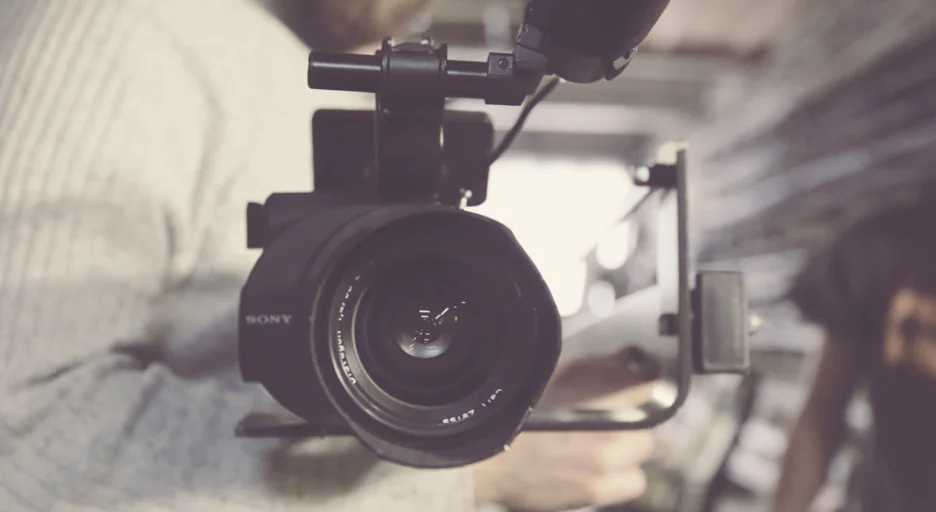Media formats and terminology explained.
A guide to the vocabulary of specialised media storage and asset management.
Media Formats and Terminology
¾” U-MATIC
One of the most successful formats of all time. Until its release, news acquisitions had primarily been gathered on 16mm film. Three versions. 280 lines of resolution. SP Improvements over the original format include a higher-energy tape and an extended FM carrier. SP (Superior Performance) had both chroma and luma subcarrier frequencies increased. 340 lines of resolution.
1″ SMPTE Type A
Industrial and educational uses.
1″ SMPTE Type B
Was very popular in Europe. Similar to the Type C format, it uses a segmented helical scan on a small-diameter drum. Each video head pass records 52 lines of video information and is therefore segmented and cannot offer still-frame or slow motion.
1″ SMPTE Type C
Ampex and Sony agreed to a standard 1-inch professional helical format called Type C. Both manufacturers had to slightly modify their designs to create a common format. It is the most popular of the 1″ professional formats. Unlike the 2″ Quad and the 1″ Type B, it offered viewable still frame, slow and fast motion, and picture shuttle. 300 lines of resolution.
2″ QUADRUPLEX
The 2″ Quad was the first successful videotape format. The name comes from its four-head wheel which rotated 240 times a second. It was still widely used in the industry in the 1980s.
8MM / VIDEO8
8mm has 255 lines of resolution. Maximum tape length is 120 minutes in SP mode or 240 minutes in LP mode.
A & B CUTTING
A method of assembling original material in two separate rolls, allowing optical effects to be made by double printing (A and B Printing).
A OR B WIND
When a roll of 16mm film, perforated along one edge, is held so that the outside end of the film leaves the roll at the top and toward the right, winding “A” should have the perforations on the edge of the film toward the observer, and winding “B” should have the perforations on the edge away from the observer. In both cases, the emulsion surface should face inward on the roll.
AD-ID
Is the advertising industry standard unique identifier for all commercial assets. It replaced the ISCI system in 2003. It is used to track advertising from the point of concept, through creation and on to distribution, and the media. It is mostly used in Television and Radio. Ad-ID codes are 12 digits in length, four alpha and eight alphanumeric characters. The first four alpha characters are company identification prefixes.
ANALOGUE
An electrical signal that is continuously variable.
ANIMATIC
Limited animation consisting of art work shot and edited to serve as a video tape storyboard. Commonly used for test commercials.
ANAMORPHIC
An optical system having different magnifications in the horizontal and vertical dimensions of the image.
ANSWER PRINT
The first print combining picture and sound submitted by the laboratory for the customers’ approval.
APERTURE
Effective Aperture: The apparent diameter of a lens viewed from the position of the object against a diffusely illuminated background, such as a sky. Picture Aperture: The rectangular opening in a metal plate at which each frame of the motion picture film is situated during exposure, printing, or projection. Relative Aperture: The ratio of the focal length of a lens to its effective aperture for an object located at infinity. See f/number.
API
Application Programming Interface is the connecting protocols that allows software components to communicate with each other
ARCHIVE
a. A place or collection containing records, documents, media or other materials of historical interest.
b. A long-term storage area, often on magnetic tape, for backup copies of files or for files that are no longer in active use.
c. A file containing one or more files in compressed format for more efficient storage and transfer.
ASSEMBLY EDIT
An edit wherein all existing signals on a tape, if any, are replaced with new signals.
AVI
Audio Video Interleave (AVI) is a popular multimedia format typically used for delivery of video content. AVI was invented by Microsoft in the early nineties. Like QuickTime (a competing technology invented by Apple around the same time), AVI is known as a Container Format because it contains content that may be compressed using a variety of other codecs such as MPEG.
BANDWIDTH
Bandwidth can refer to two different things: the rate at which data can be transferred, or the total amount of data allowed to be transferred from a web host during a given month (or other hosting service term) before overage charges are applied. Generally referred to in bits per second (..bps)
BASE
The transparent, flexible support, commonly cellulose acetate, on which photographic emulsions are coated to make photographic film.
BETACAM
Developed as a component-recording professional format to be able to use consumer cassettes…Betamax. Records an analogue component signal, storing the luminance (Y) in one track and the chrominance (R-Y, B-Y) on another. This splitting of channels provides a crisp, true broadcast quality product. 300 lines of resolution.
BETACAM SP
SP (Superior Performance) was an industry standard for most TV stations and high-end production houses up until the late 90s. 340 lines of resolution.
BETACAM SX
Digital format targeted for ENG and newsroom use. Can be sent back to the studio at 2X speed on a standard DS0-3 data connection.
BETAMAX
Was the first successful consumer videocassette. Was a hit at first but later failed in the market place against VHS. Its initial maximum record time of one hour was a disadvantage initially that it was not able to overcome even when it later offered five hour record times.
BLANKING
Portions of the video signal during which both camera and receiver complete a scan line (horizontal blanking) or field (vertical blanking), and retrace to begin the next scan.
BROWSER
Browser refers to the program a website visitor is using to view the web site. Examples include – Safari, Firefox, Google Chrome, Internet Explorer
BVH-1000
Competitor of the Type A. Features of Type A and the BVH-1000 were combined into a common, standardized format…Type C. Sony’s first Type C machines were also called BVH-1000.
CACHE/CACHING
Cached files are those that are saved or copied (downloaded) by a web browser so that the next time that user visits the site, the page loads faster.
CAMERA LOG
A record sheet giving details of the scenes photographed on a roll of original negative.
CHROMINANCE
The colour portion of a video signal.
CINEMASCOPE
Trade name of a system of anamorphic widescreen presentation.
CODEC
Codec stands for coder/decoder and refers to the encoding of analogue media like audio or video into digital format and subsequent decoding upon playback. Codecs are methods of achieving this process (they are often called ‘algorithms’). The encoded media are sometimes referred to as essences.
COLOUR BURST
Sample of the colour sub carrier inserted into the horizontal blanking interval at the start of each line of video.
COMPOSITE PRINT
A motion picture print with both picture and sound on the same strip of film.
COMPONENT VIDEO
System of signal recording and processing that maintains the original video elements separately rather than combined (encoded) into a single, composite signal.
COMPOSITE VIDEO
A video signal in which the luminance and chrominance elements have been combined, as in NTSC, PAL and SECAM.
COMPOSITE WITH SPLITS, COMPRESSION
Compression is used in many digital media file formats to reduce the amount of storage capacity required to hold files on a storage medium and to enable faster transmission over networks. The process of compressing data uses one or more algorithms that identifies potential inefficiencies in terms of how the file is stored. The algorithm needs to both compress and decompress the file so it can be saved and opened again later.
CONTRAST
(1) The general term for describing the tone separation in a print in relation to a given difference in the light-and-shade of the negative or subject from which it was made. Thus, “contrast” is the general term for the property called “gamma” (Y), which is measured by making an H & D Curve for the process under study. (2) The range of tones in a photographic negative or positive expressed as the ratio of the extreme opacities or transparencies or as the difference between the extreme densities This range is more properly described as “scale” or “latitude” (3) The ability of a photographic material, developer, or process as a whole to differentiate among small graduations in the tones of the subject.
CONTROL TRACK
Electronic sprocket holes recorded on video tape to guide the heads and control tape transport during playback.
CRI
Colour Reversal Intermediate, a duplicate colour negative prepared by reversal processing.
D1
First digital VTR. Received little acceptance in broadcast where it was designed for, but was welcomed in graphics production. Due to expensive machines and tapes, it was mainly used in high-end postproduction facilities that incorporate special effects with multiple layering of video signal. 460 lines of resolution.
D2
Digital composite format. Advancements in component-based advanced TV ended the interest in composite, including D2. Cassettes hold up to 180 minutes. 450 lines of resolution.
D3
Introduced as Panasonic’s answer to D2, it was promoted as a low-cost digital alternative. Achieved more than twice the recording capacity of D2. 450 lines of resolution.
D5
Component, non-compressed digital format. Can playback D3 tapes.
D5HD
Compressed HD version of D5. Can work with 1080 line and 720 line HDTV formats.
D6
Digital HDTV. Uses more heads and offers more audio channels than any other videotape format.
D7
AKA DVCPRO. Capable of 4X playback speed. Decks can play back DVCAM. 530 lines of resolution.
D9
Digital S. Rivals the much more expensive Digital Betacam in terms of picture quality. Downward compatible with SVHS. 540 lines of resolution.
D9 HD
AKA Digital S-100. Used for recording compressed and sub-sampled HDTV. Uses same tape as D9.
D11
AKA HDCAM. Compressed digital HDTV format that employs both subsampling and compression to reduce data bandwidth
DAILIES
The first positive prints made by the laboratory from the negative photographed on the previous day.
DCT
DCT was the first format to employ digital video compression to reduce recorded bit rate.
DECIBEL
A unit of measure applied to both sound and electrical signals, based on a logarithmic scale. Also referred to as “db’s.”
DERIVATIVE FILES
Derivative files describes assets that are created from the original. In Digital Asset Management Systems, these can refer to previews that enable users to see what an asset looks like before they download it. They may include a variety of options such as thumbnail images, Flash Video, low resolution or watermarked editions of images. As well as previews, derivative files sometimes refers to assets that will be used for production purposes but where some key aspect has been altered.
DIGITAL
A system whereby a continuously variable (analogue) signal is broken down and encoded into discrete binary bits that represent a mathematical model of the original signal.
DIGITAL 8
Records same digital signal as DV onto less expensive Hi8 tapes. Plays back 8mm and Hi8 tapes. A 120 minute Hi8 tape can record 60 minutes of Digital 8. Has analogue inputs for digitally archiving existing analogue footage. Audio is CD-quality
DIGITAL BETACAM
Digital successor to Betacam. Considered to have almost the same quality as D1 at half the cost and size. High end SDTV. Can playback, but not record betacam SP tapes. Sony’s answer to DCT and D5.
DIGITAL INTERMIEDIATE
(DI) describes the process of digitizing a motion picture and manipulating colour and other image characteristics to change the look, and is usually the final creative adjustment to a movie before distribution in theatres. It is distinguished from the telecine process in which film is scanned and colour is manipulated but only intended for video and television distribution. A digital intermediate is also customarily done at higher resolution and with greater colour fidelity than telecine transfers and utilizes only digital tools.
DISSOLVE
A transition between two scenes where the first merges imperceptibly into the second (Lap Dissolve: Mix).
DUPE, DUPE NEGATIVE
A duplicate negative, made from a master positive by printing and development or from an original negative by printing followed by reversal development.
DVCAM
Sony’s answer to DVCPRO. Includes a feature that allows information to be recorded on a memory chip inside the cassette, such as good and bad take identifiers. 530 lines of resolution.
D-VHS
Consumer digital format designed to be used with satellite dish systems
DVCPRO 50
Two more digital channels than DVCPRO.
DVCPRO HD
High-definition version of DVCPRO recording the same signal as D9HD. Machines can play all previous forms of DVCPRO tapes as well as DVCAM and DV tapes.
DVE (Digital Video Effects)
Special effects, such as picture compression, rotation, reversal, etc., performed with a digital effects system. Also, the trade name for a video system manufactured by NEC.
DV
Many manufacturers released first DV camcorders in 1995 – Sony, Philips, Thomson, Hitachi, Panasonic, etc. First digital recording format available to consumers. Nearly loss-less broadcast quality picture. Maximum tape length is 80 minutes in SP mode or 120 minutes in LP mode. 500 lines of resolution.
EDGE NUMBERS
Numbers printed along one edge of a motion picture film outside the perforations to designate the footage.
EDL (Edit Decision List)
List of edits prepared during off-line editing prior to on-line editing.
EMULSION, EMULSION LAYER
(1) Broadly, any light-sensitive photographic material consisting of a gelatin emulsion containing silver halide together with the base and any other layers or ingredients that may be required to produce a film having desirable mechanical and photographic properties (2) In discussions of the anatomy of a photographic film, the emulsion layer is any coating that contains light sensitive silver halide grains, as distinguished from the backing, base, substratum, or filter layers.
ESSENCE
Essences refers to raw audio or video streams used in media files. Essences will usually be encoded with a Codec such as MPEG or MP3.
FADE
An optical effect in which the image of a scene is gradually replaced by a uniform dark area, or vice versa.
FILE BROWSING
(1) To view file and folder names on a disk. See file manager.
(2) To view the contents of files. See file viewer.
FILE MANAGER, FILE VIEWER
From Windows Explorer and Mac Finder, In the Windows XP version of the Explorer file manager, Microsoft added a Filmstrip mode for viewing images. In Vista, it replaced Filmstrip with variable-sized icons. In Mac OS X 10.5, Apple added its iTunes Cover Flow technology to the Finder file manager for viewing all files.
FLAT
An image is said to be “flat” if its contrast is too low. Flatness is a defect that does not necessarily affect the entire density scale of a reproduction to the same degree. Thus, a picture may be “flat” in the highlight areas, or “flat” in the shadow regions, or both.
FLICKER
The alternation of light and dark periods which can be visually appreciated.
FLUTTER
In sound, rapid period variation of frequency caused by unsteadiness of the film or tape drive.
FOLEY
Background sounds added during audio sweetening to heighten realism, e.g., footsteps, bird calls, heavy breathing, short gasps, etc.
FORMAT
The size or aspect ratio of a motion picture frame.
f-NUMBER
A symbol that expresses the relative aperture of a lens. For example, a lens having a relative aperture of 4.5 would be marked: f/4.5.
FRAME (FILM)
The individual picture image on a strip of motion picture film.
FRAME (VIDEO)
A complete television picture made up of two fields, produced at the rate of approximately 29.97 Hz (colour), or 30 Hz (black & white).
FREEZE FRAME
An optical printing effect in which a single frame image is repeated so as to appear stationary when projected.
FRONT END
General terms for all production and preparation work up to the Answer Print stage before Release Printing.
GATE
The aperture assembly at which the film is exposed in a camera, printer or projector.
HARRY
Trade name of a highly sophisticated and versatile digital effects system manufactured by Quantel. Incorporates Quantel’s Paintbox digital effects generator.
HDD
A Hard Disk Drive is a storage device for digital information using rapidly rotating disks. Many are now external to system hardware creating a portable storage device.
HI8
Much improved version of 8mm video. Has an optional second AFM track for stereo sound. 415 lines of resolution. Maximum tape length is 120 minutes in SP mode.
INTERLACE
The manner in which a television picture is composed, scanning alternate lines to produce one field, approximately every 1/60 of a second in NTSC. Two fields comprise one television frame. Therefore, the NTSC television frame rate of approximately 30 fps.
INTERMEDIATES
General term for colour masters and dupes.
INTER-POSITIVE
A colour master positive print.
ISCI CODE
An ISCI (Industry Standard Commercial Identifier) code conforms to a standard used to identify commercials (aka “spots”) aired on commercial television worldwide, for TV stations, ad agencies, video post-production houses, radio stations and other related entities to identify commercials for airing.
JOB NUMBER
For each commercial production, there can be multiple job numbers. A job number refers to the project number a vendor assigns for their role in the production. From the production company which typically hires the director, to the editing facility which “finishes” the final product for the broadcaster, each has a job number.
KEY NUMBER
Numbers printed along one edge of a motion picture film outside the perforations to designate the footage.
KEYKODE NUMBERS READER
Device attached to a telecine or part of a bench logger which reads Keykode numbers bar code from motion picture film and provides electronic output to a decoder.
KEYWORD
A word used to find pages when conducting a search.
KINESCOPE
A film recording of a video image displayed on a specially designed television monitor. Also called “Kine.” Only means of recording TV programs before video recorders and tape were invented.
LAYBACK
Transferring the finished audio track back to the master video tape.
LIQUID GATE
A printing system in which the original is immersed in a suitable liquid at the moment of exposure in order to reduce the effect of surface scratches and abrasions.
LTFS
Linear Tape File System refers to both the format of data recorded on magnetic tape and the implementation of specific software that uses this data format. The Linear Tape File System format is an open description of the layout of data-structures stored on a sequential-access media.
LTO
Linear Tape Open is a magnetic tape data storage technology.
MATTE
An opaque outline which limits the exposed area of a picture, either as a cut-out object in front of the camera or as a silhouette on another strip of film.
META DATA
Meta data is the data contained in the header that offers information about the web page that a visitor is currently on. The information contained in the Meta data is not visible on the actual web page, purely in the source code. Meta data is contained within Meta tags.
META TAG
A Meta tag is an HTML tag used to include Meta data within the header of a web page.
MII
Introduced as a competitor to beta sp. Splits the video signal into red, green and blue, providing outstanding quality and colour. 340 lines of resolution.
MOS
Slang for silent shooting. From the slang German “mit out sprechen” (“without talking.” The correct German phrase would be “ohne sprechen.”)
MPEG IMX
Enhanced picture quality and multi-generation performance. Certain models allow playback of all current broadcast beta formats.
MULTIPLEXER
Device or circuit used for mixing television signals to a single video recorder.
MXF
Material Exchange Format is a container format for time based media such as video and audio. MXF files allow a number of essences encoded in a given codec to be stored in the same file as the metadata which may be used to describe it. The implementation of MXF varies across different software systems, some will not actually use the same file to store data but rely on a single MXF header file with linked video, audio and XML metadata stored as separate files.
NON-DROP FRAME
A type of SMPTE time code that continuously counts a full 30 frames per second. As a result, non-drop-fame time code does not exactly match real time. (See also Drop Frame.)
NTSC
National Television Standards Committee: Committee that established the colour transmission system used in the U.S. and some other countries. Also used to indicate the system itself, consisting of 525 lines of information, scanned at approximately 30 frames per second.
OCN
The original camera negative (OCN) is the film in a motion picture camera which captures the original image. This is the film from which all other copies will be made. It is known as raw stock prior to exposure.
OFF-LINE
Preliminary editing done on relatively low-cost editing systems, usually to provide an EDL for final on-line editing and assembly of the finished show.
ON-LINE
Final editing or assembly using master tapes to produce a finished program ready for distribution. Often preceded by off-line editing, but in some cases programs go directly to the on-line editing suite. Usually associated with high-quality computer editing and digital effects.
OPTICAL EFFECTS
Trick shots prepared by the use of an optical printer in the laboratory, especially fades and dissolves.
OPTICAL SOUND
A sound track in which the record takes the form of variations of a photographic image.
OUT-TAKE
A take of a scene which is not used for printing or final assembly in editing.
PAINTBOX
Trade name of a computer graphics system manufactured by Quantel. Used to create two-dimensional graphics, transpose and transform objects and change colours. The computer graphics generator for Quantel’s Harry system.
PAL (Phase Alternation by Line)
Colour television system developed in Germany, and used by many European and other countries. PAL consists of 625 lines scanned at a rate of 25 frames per second.
PRORES
Is a lossy video compression format developed by Apple Inc for use in post production that supports up to 4k.
PROTECTIVE MASTER
A master positive from which a dupe negative can be made if the original is damaged.
REDUCTION PRINTING
Making a copy of smaller size than the original by optical printing.
RELEASE PRINT
In a motion picture processing laboratory, any of numerous duplicate prints of a subject made for general theatre distribution.
REVERSAL PROCESS
Any photographic process in which an image is produced by secondary development of the silver halide grains that remain after the latent image has been changed to silver by primary development and destroyed by a chemical bleach. In the case of film exposed in a camera, the first developer changes the latent image to a negative silver image. This is destroyed by a bleach and the remaining silver halide is converted to a positive image by a second developer. The bleached silver and any traces of halide may now be removed with hypo.
ROUGH CUT
In filmmaking, the Rough cut is the second of three stages of offline editing. The rough cut is the first stage in which the film begins to resemble its final product. Rough cuts do not flow well and still undergo many changes before the release of the film.
SCHEMA
Generally, a schema is an XML document used in place of a DTD to describe other XML documents.
S-VHS
S=super. Marketed as a high-end consumer format. “S-video” separates the chrominance (colour) and luminance (brightness) signals, although not as purely as the true component systems do. VHS tapes may be played and recorded on S-VHS machines, but S-VHS cannot be played nor recorded on VHS machines. 400 lines of resolution. Maximum tape length is 160 minutes.
SVHS-C
Compact version of SVHS. With an adapter, tapes will play in a S-VHS VCR. Maximum tape length is 40 minutes.
SAFETY FILM
A photographic film whose base is fire-resistant or slow burning. At the present time, the terms “safety film” and “acetate film” are synonymous.
SECAM (Systeme Electronique Pour Colour Avec Memorie)
The colour television system developed in France, and used there and in most of the former communist-block countries and a few other areas including parts of Africa.
SCRIPT NOTES
Script notes are created by a script supervisor who is hired by the production company to briefly summarize what is transpiring in key shots throughout the shoot. The camera roll/shoot tape roll is listed along with the scene number and often a photo of the take is displayed.
SPLICE
Any type of cement or mechanical fastening by which two separate lengths of film are united end-to-end so they function as a single piece of film when passing through a camera, film processing machine, or projector.
SPROCKET
A toothed driving wheel used to move film through various machines by engaging with the perforation holes.
STEADY GATE
A pin-registered device manufactured by Steady Film for precise telecine transfers. Provides more stable images than EPR, but does not operate in real time.
STRIPE
A narrow band of magnetic coating or developing solution applied to a length of motion picture film.
SWEETENING
Audio postproduction, at which time minor audio problems are corrected. Music, narration and sound effects are mixed with original sound elements.
TAKE
When a particular scene is repeated and photographed more than once in an effort to get a perfect recording of some special action, each photographic record of the scene or of a repetition of the scene is known as a “take.” For example, the seventh scene of a particular sequence might be photographed three times, and the resulting records would be called: Scene 7, Take l; Scene 7, Take 2; and Scene 7, Take 3.
TALENT AUDITION TAPES
Prior to choosing actors for a job, an advertising agency will contact a talent agency to send samples of their contracted talent as potential hires. Often the sample discs and DVDs are included with the production elements. These can be used as reference for future jobs.
TELECINE
Device for transferring motion picture film to video tape.
TIME CODE
A frame numbering system adopted by SMPTE that assigns a number to each frame of video which indicates hours, minutes. seconds and frames (e.g., 01:42:13:26).
TRANSCODING
The direct analogue-to-analogue or digital-to-digital conversion of one encoding format to another.
TYPE C
SMPTE standard for 1-inch non-segmented helical video recording format.
U-MATlC
Trade name for 3/4-inch video cassette system originally developed by Sony. Now established as the ANSI (American National Standards Institute) Type F video tape format.
VAULTING
In computing, off-site data protection, or vaulting, is the strategy of sending critical data out of the main location (off the main site) as part of a disaster recovery plan.VERTICAL
INTERVAL
Indicates the vertical blanking period between each video field. Contains additional scan lines above the active picture area into which non-picture information (captioning, test and control signals, user bits) can be recorded.
VHS
Video home system. The most successful of all home video formats, it was introduced as a competitor of Betamax. 250 lines of resolution. Maximum tape length is 200 minutes in SP mode, which is 600 minutes in EP mode.
VHS-C
Compact version of VHS. The “C” stands for compact. With an adapter, tapes will play in a VHS VCR. Maximum tape length is 40 minutes in SP mode, which is 120 minutes in EP mode.
VITC (Vertical Interval Time Code)
Time code recorded in the vertical blanking interval above the active picture area. Can be read from video tape in the “still mode.”
WET-GATE PRINTING
A system of printing in which the original is temporarily coated with a layer of liquid at the moment of exposure to reduce the effect of surface faults.
WIDESCREEN
General term for form of film presentation in which the picture shown has an aspect ratio greater than 1’33:1.
WINDOW DUB
“Burned-in windows,” usually on a video workprint, displaying Keykode numbers and time code, footage count, audio time code, scene, take, etc. (May also be burned in.)
WIPE
Optical transition effect in which one image is replaced by another at a boundary edge moving in a selected pattern across the frame.
WORK PRINT
In a motion picture studio or processing laboratory, a rough print of a motion picture film used for editing and study of action and continuity.
XML
Stands for Extensible Markup Language. XML is a specification for creating other, custom markup languages. It is an extensible language because it allows for the user to define the mark-up elements.





